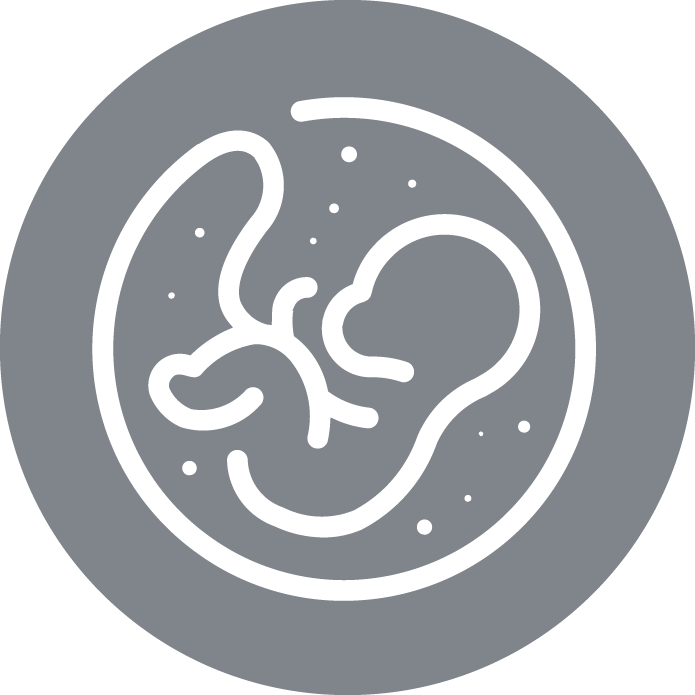Whole Genome Sequencing: The Key to Understanding Embryo Implantation
In the field of reproductive medicine, one of the most frequently asked questions is: Why do some genetically normal embryos fail to implant or result in miscarriage? Despite the use of advanced technologies like preimplantation genetic testing (PGT), reproductive outcomes are often not as expected. In this context, Whole Genome Sequencing (WGS) is emerging as a revolutionary tool that could close this gap of uncertainty.
What Does Whole Genome Sequencing Offer?
Unlike traditional PGT, which primarily focuses on detecting aneuploidies or known inherited mutations, WGS allows for the analysis of all ~20,000 genes in the human genome. This provides a much broader and deeper view of the embryo, making it possible to detect:
- De novo pathogenic variants
- Mutations in lethal genes affecting development
- Previously undiagnosed monogenic diseases
- Structural imbalances and epigenetic alterations
The result: improved prediction of implantation potential and embryonic development.
The Gap Between Euploidy and Reproductive Success
Dr. Antonio Capalbo, Scientific Director at Juno and lead coordinator of a study presented at the 11th International IVIRMA Congress, highlights: “50% of embryos classified as genetically normal (euploid) fail to implant, and an additional 10% end in miscarriage. There’s a significant gap in our ability to accurately predict implantation success and embryonic development, which is why exploring alternative approaches is so important,” he explains. “This may be due to lethal gene mutations, particularly those that arise de novo in germ cells and are undetectable by current technologies,” he warns.
These findings reveal a concerning clinical reality: even embryos that appear chromosomally normal may carry lethal genetic mutations that compromise their development. Whole genome sequencing makes it possible to identify these mutations, including those that arise spontaneously and are missed by current methodologies.
Advantages of Integrating WGS into Embryo Diagnosis
- Comprehensive genome coverage: analyzes all 3.2 billion base pairs, not just chromosomes
- Simultaneous analysis of aneuploidies, genetic diseases, structural mutations, and epigenetic factors
- Better personalization of assisted reproductive treatments
- Early detection of hereditary risks for serious diseases
Dr. Capalbo summarizes its clinical potential: “WGS is the next frontier of PGT. It allows us to offer patients a full genetic assessment, without relying on family history or prior suspicion.”
Limitations of Current PGT Methods
Traditional approaches, such as trophectoderm biopsy, are invasive and limited. They analyze only a few cells from the embryo and focus on macroscopic aspects like aneuploidies or known inherited mutations. This leaves out many genetic causes behind implantation failure or early-onset diseases in offspring.
Additionally, these methods do not provide a realistic prediction of each embryo’s reproductive potential.
What Changes with Complete Embryo Sequencing?
- Identification of genetic biomarkers that better predict implantation success
- Deeper understanding of human embryonic development
- Enhanced ability to make informed, personalized clinical decisions
- Reduction in failed cycles and miscarriages
This means we could offer truly precision reproductive medicine—anticipating complications even before embryo transfer.
Ethical and Technical Challenges
While the benefits of WGS are clear, several challenges must also be considered:
- Handling genetic information: How do we communicate to prospective parents that an embryo carries a potentially serious mutation?
- Cost and accessibility: It is still an expensive technology, which could limit widespread implementation
- Clinical validation: More studies are needed to assess its real impact on clinical outcomes
Despite these challenges, experts agree we are facing a paradigm shift in embryo genetic analysis.
Specialized Training: The Future of Clinical Embryology
Implementing WGS requires professionals trained in genetic interpretation, reproductive genetic counseling, and bioethics. That’s why institutions like IVI Global Education are already incorporating modules focused on WGS, advanced PGT, and bioinformatic analysis into their training programs.
Whole Genome Sequencing is not just a diagnostic tool—it is a window into a new era of reproductive medicine. Its ability to identify changes invisible to traditional PGT opens the door to more effective, safer, and personalized treatments.
As clinical studies advance and its utility becomes more established, WGS could become a standard test for those seeking to improve their chances in the delicate process of starting a family. The future of assisted reproduction is closer than ever to being truly predictive, preventive, and personalized.



